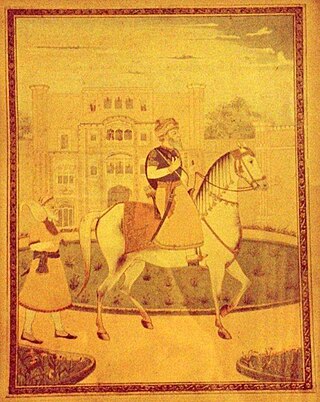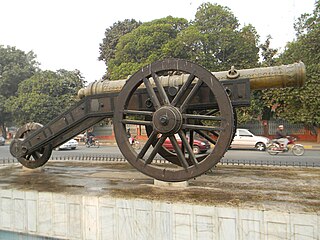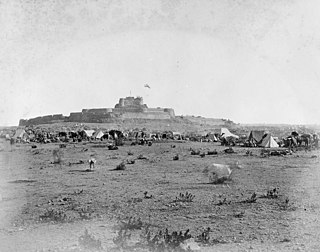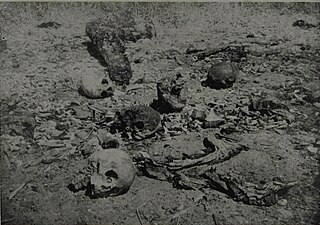
Gujranwala is a city and capital of Gujranwala Division located in Pakistan. It is also known as "City of Wrestlers" and is quite famous for its food. It is the 5th most populous city proper after Karachi, Lahore, Faisalabad and Rawalpindi respectively. Founded in the 18th century, Gujranwala is a relatively modern town compared to the many nearby millennia-old cities of northern Punjab. The city served as the capital of the Sukerchakia Misl state between 1763 and 1799, and is the birthplace of the founder of the Sikh Empire, Maharaja Ranjit Singh.

The Sukerchakia Misl was one of twelve Sikh misls in Punjab during the 18th century, concentrated in Gujranwala and Hafizabad districts in western Punjab and ruled from (1752–1801). The misl was founded by Charat Singh of Sandhawalia, grandfather of Maharaja Ranjit Singh. The last Sukerchakia Misldar was Maharaja Ranjit Singh. Towards the end of the eighteenth century, Maharaja Ranjit Singh united all the misls and established an independent Sikh Empire.

Maha Singh, also spelt as Mahan or Mahn Singh, was the second chief of the Sukerchakia Misl. He was the eldest son of Sardar Charat Singh and Sardarni Desan Kaur Warraich. He was the father of Sher-e-Punjab Maharaja Ranjit Singh.

Majha is a region located in the central parts of the historical Punjab region split between India and Pakistan. It extends north from the right banks of the river Beas, and reaches as far north as the river Jhelum. People of the Majha region are given the demonym "Mājhī" or "Majhail". Most inhabitants of the region speak the Majhi dialect, which is the basis of the standard register of the Punjabi language. The most populous city in the area is Lahore on the Pakistani side, and Amritsar on the Indian side of the border.

Gujranwala District, is a district that is a part of the Majha region in Punjab, Pakistan. Gujranwala District is bordered by the districts of Wazirabad, Sialkot, Hafizabad and Sheikhupura. Gujranwala district has 5 National Assembly and 12 Punjab Assembly constituencies.

The Misls were the twelve sovereign states of the Sikh Confederacy, which rose during the 18th century in the Punjab region in the northern part of the Indian subcontinent and is cited as one of the causes of the weakening of the Mughal Empire prior to Nader Shah's invasion of India in 1738–1740.

Sultan-ul-Qaum Sardar Jassa Singh Ahluwalia was a Sikh leader during the period of the Sikh Confederacy, being the Supreme Leader of the Dal Khalsa. He was also Misldar of the Ahluwalia Misl. This period was an interlude, lasting roughly from the time of the death of Banda Bahadur in 1716 to the founding of the Sikh Empire in 1801. He founded the Kapurthala State in 1772.
Khushal Singh Virk was the second chief of Singhpuria Misl from 1753 to 1795, extending its territory on both sides of the Sutlej River. His 'acquired' lands included Jalandhar, Nurpur, Bahrampur, Patti and Bharatgarh. Jalandhar doab and adjoining areas yielded an annual income of three lakh rupees.

The Zamzama Gun also known as Kim’s Gun or Bhangianwali Toap is a large-bore cannon. It was cast in about 1757 in Lahore during the Durrani Empire. It is currently on display in front of the Lahore Museum in Lahore, Pakistan.

The Jamrud Fort is located beside Bab-e-Khyber at the entrance to the Khyber Pass from the Peshawar side in the tribal district of Khyber KPK, Pakistan. After death of Sardar General Hari Singh Nalwa, Khalsa Sarkar Wazir Jawahar Singh nominated Sardar General Gurmukh Singh Lamba as chief administrative and military commander to restore and consolidate the Khalsa army gains. General Sardar Gurmukh Singh Lamba was nominated as chief administrative and military commander to consolidate the gains of Khalsa Sarkar.

Vadda Ghalughara was the mass murder of unarmed Sikhs by the Afghan forces of the Durrani Empire during the years of Afghan influence in the Punjab region of the Indian subcontinent owing to the repeated incursions of Ahmad Shah Durrani in February 1762. It is distinguished from the Chhota Ghalughara. Mostly non-combatants were killed in the event, and an estimated that 10,000 to 50,000 Sikhs were killed on 5 February 1762.

Sardar Charat Singh, also romanised as Charhat Singh, was the founder of Sukerchakia Misl and father of Mahan Singh, and the grandfather of Ranjit Singh. He distinguished himself at an early age in campaigns against Ahmad Shah Abdali and along with 150 horsemen split from the Singhpuria Misl to establish the Sukerchakia Misl.

Rani Sada Kaur was a Sikh leader. She served as the Chief of the Kanhaiya Misl from 1789 to 1821, following the death of her husband Gurbaksh Singh Kanhaiya, the heir to Jai Singh Kanhaiya, the leader of the Kanhaiya Misl, and she is sometimes referred to as Sardarni Sada Kaur.

The Afghan–Sikh Wars spanned from 1748 to 1837 in the Indian subcontinent, and saw multiple phases of fighting between the Durrani Empire and the Sikh Empire, mainly in and around Punjab region. The conflict's origins stemmed from the days of the Dal Khalsa, and continued after the Emirate of Kabul succeeded the Durrani Empire.
The Battle of Kup was fought on 5 February 1762, between the Afghan forces of Ahmad Shah Durrani and the Sikhs, under the command of Jassa Singh Ahluwalia and Charat Singh. Ahmad Shah Durrani and the Afghan forces reached Malerkotla, west of Sirhind. Different sources give various estimates on how many sikhs were present. According to Tom Landsford, nearly 30,000 Sikh men, women, children, and elderly laid encamped. According to Narendra Sinha, 40,000 Sikhs were present. According to Hari Ram Gupta, 50,000 Sikh soldiers laid encamped at Kup while 5,000 non combatants laid encamped at Pind Garma. Abdali's forces outnumbered the Sikhs in hand-to-hand combat and the Sikhs couldn't use their usual tactics of hit and run, but had to engage in battle while protecting the civilians at the same time. With surprise attack, the Sikhs threw a human ring around civilians as protection and fought the battle killing several thousand Afghans. Abdali was able to break the ring and carried out a full scale massacre of the Sikh civilians. Ahmad Shah's forces killed several thousand Sikhs, and the surviving Sikhs fled to Barnala. According to various different estimates, as many as 5,000 to 30,000 Sikh men, women, elderly and children were killed in what is known as the second Sikh genocide.
The Battle of Sialkot took place on 12 November 1763, between the Durrani Empire, led by Jahan Khan, and the Sukerchakia Misl, led by Charat Singh, as part of the Afghan-Sikh wars which concluded with Sikh victory.
The Battle of Gujranwala was fought between the Durrani Empire and the Sikh Confederacy in September 1761.

Ahmad Shah Durrani, the founder of the Durrani Empire, invaded Indian subcontinent for eight times between 1748 and 1767, following the collapse of Mughal Empire in the mid-18th century. His objectives were met through the raids and deepened the political crisis in India.
The Battle of Sialkot was fought between Durrani Empire and Sukerchakia Misl of Dal Khalsa in 1761.
The battle of Rohtas took place in summer of 1764 between the Durranis and the Sikh Misls. The battle resulted in Sikh Victory with the capture of the city of Rohtas Fort and its governor Sarbuland Khan.














